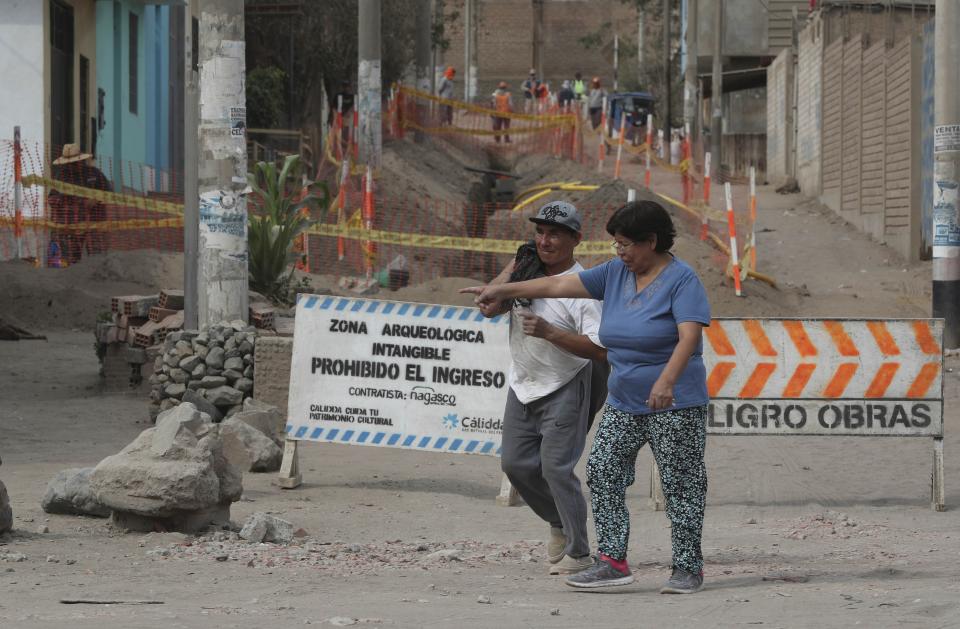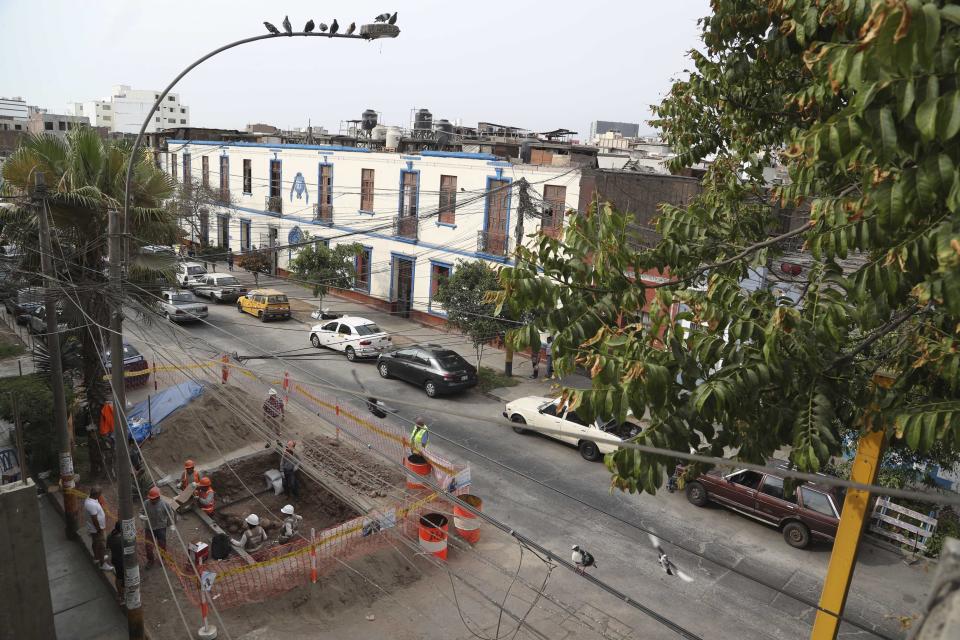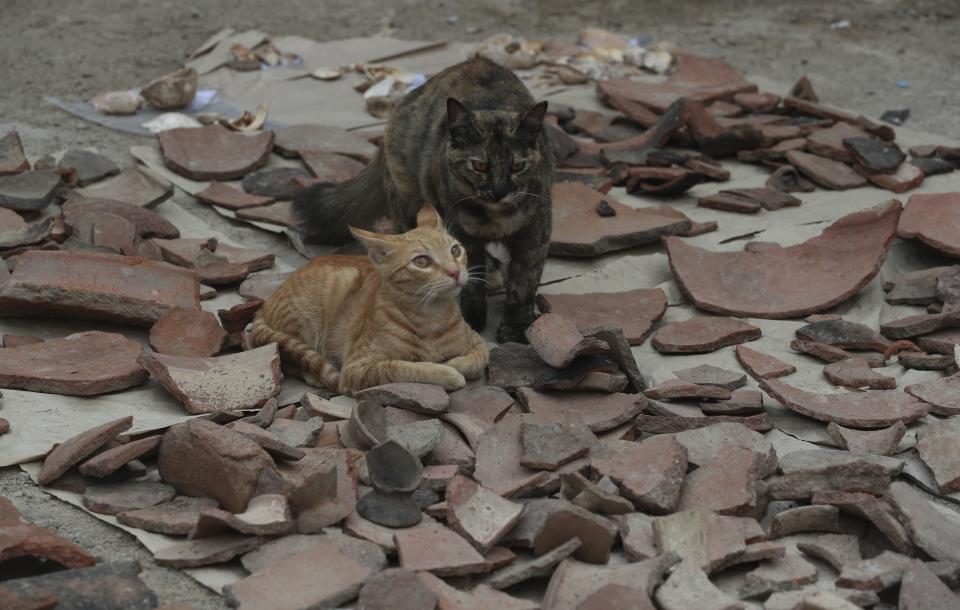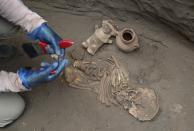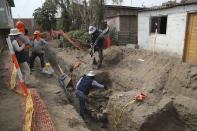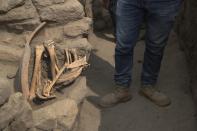Peru gas workers unearth centuries of history in Lima's soil
LIMA, Peru (AP) — For nearly two decades, workers for a company building gas lines across Peru’s capital have found themselves unearthing a treasure trove of history.
On one recent afternoon, a team came across four burials accompanied by ceramics from a pre-Incan civilization. Two years earlier, they found the bodies of farmers who had been among the first wave of Chinese immigrants in the 19th century.
“Lima literally sits atop a cultural bank,” with one layer of history atop another, said Alexis Solis, one of 40 archaeologists who work for the Calidda national gas company that is installing lines across the city.
The cooperation is a step forward for preservation in a metropolis whose rapid growth over the past century led to the destruction of many important sites.
Gas line worker Segundo Chávez last year found the body of a child inside a base — a burial characteristic of the pre-Incan Chancay people who flourished from about 1200 to 1470 b— and he recalled how his shouts of discovery attracted nearby residents from their houses.
“It was an ancient burial, 80 centimeters deep,” Chavez said as he looked at two other recent discoveries — still unrecovered — in a ditch in a street in the Puente Piedra neighborhood: bones of an adult in a huge vase and the those of a baby found with a ceramic figure of a “Cuchimilco,” a sort of guide through the world of the dead in the Chancay culture.
The Colombia-based company says it has installed about 10,000 kilometers (6,000 miles) of natural gas lines across Lima over the past 16 years, and it’s reported about 300 archaeological finds, some of them 2,000 years old.
It says it has spent about $2 million the archaeological effort.
Peruvian law requires that archaeological discoveries be reported and turned over to the Culture Ministry.
But some developers have been cavalier about following the law and preserving the nation’s history.
In 2013, workers for real estate developers destroyed a 4,500-year-old pyramid-shaped structure on the edges of the city.
What is now Peru’s capital, located in a valley irrigated by three rivers fed from the Andes, housed human civilizations thousands of years before the Spanish arrived in 1535. It is scattered with cemeteries, irrigation canals, structures and ancient roads, with thin, vulnerable layers of deposited earth separating vastly different eras.
“The physical difference between the present and antiquity is but a few centimeters,” Solis said.

 Yahoo News
Yahoo News 
